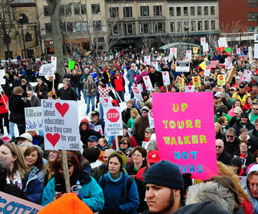Book: Unionizing America's Health Care System via ObamaCareless
Mallory Factor's new book outlines how big labor pushed for enactment of ObamaCare so it could coercively unionize 20 million new government health care workers. The National Right to Work Committee warned of the dangers to workers back in 2009 and will continue to work to see that the law is repealed. From David Martosko at the Daily Caller: In a book set for publication Tuesday, a politics and government professor at The Citadel claims President Obama’s 2009 health care reform law was, in part, a union-driven effort to organize 21 million health care workers. In "Shadowbosses: Government Unions Control America and Rob Taxpayers Blind,” Mallory Factor describes a December 9, 2008 memo from Service Employees International Union (SEIU) Healthcare president Dennis Rivera to the Obama-Biden transition team. That memo outlined a legislative proposal calling for “increasing the capacity of the health care workforce” as part of a larger health care reform initiative. The SEIU and the [American] Federation of State, County and Municipal Employees (AFSCME), Factor writes, later coordinated with other public-sector unions to spend “literally hundreds of millions of dollars promoting Obamacare.” The Daily Caller requested comments for this article from the SEIU, AFSCME and a White House spokesman. None of them responded. Factor, who is also a Forbes columnist and senior editor of money and politics for The Street.com, recounts emails from former federal Office of Labor-Management Standards staffer Don Loos, now a senior adviser to the president of the National Right to Work Legal Defense Foundation. (also see: 21.1 Millon Reasons Big Labor Pours Money Into ObamaCare)





